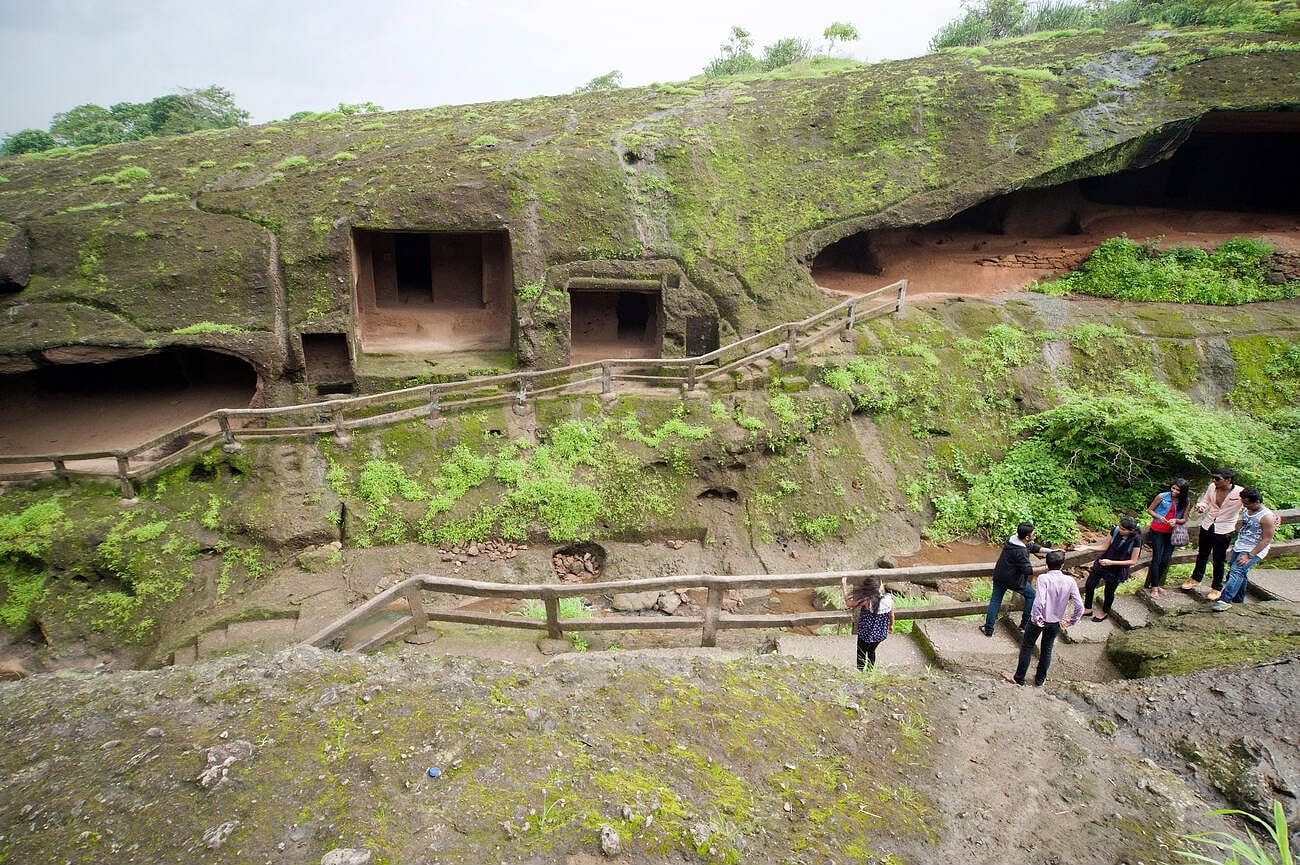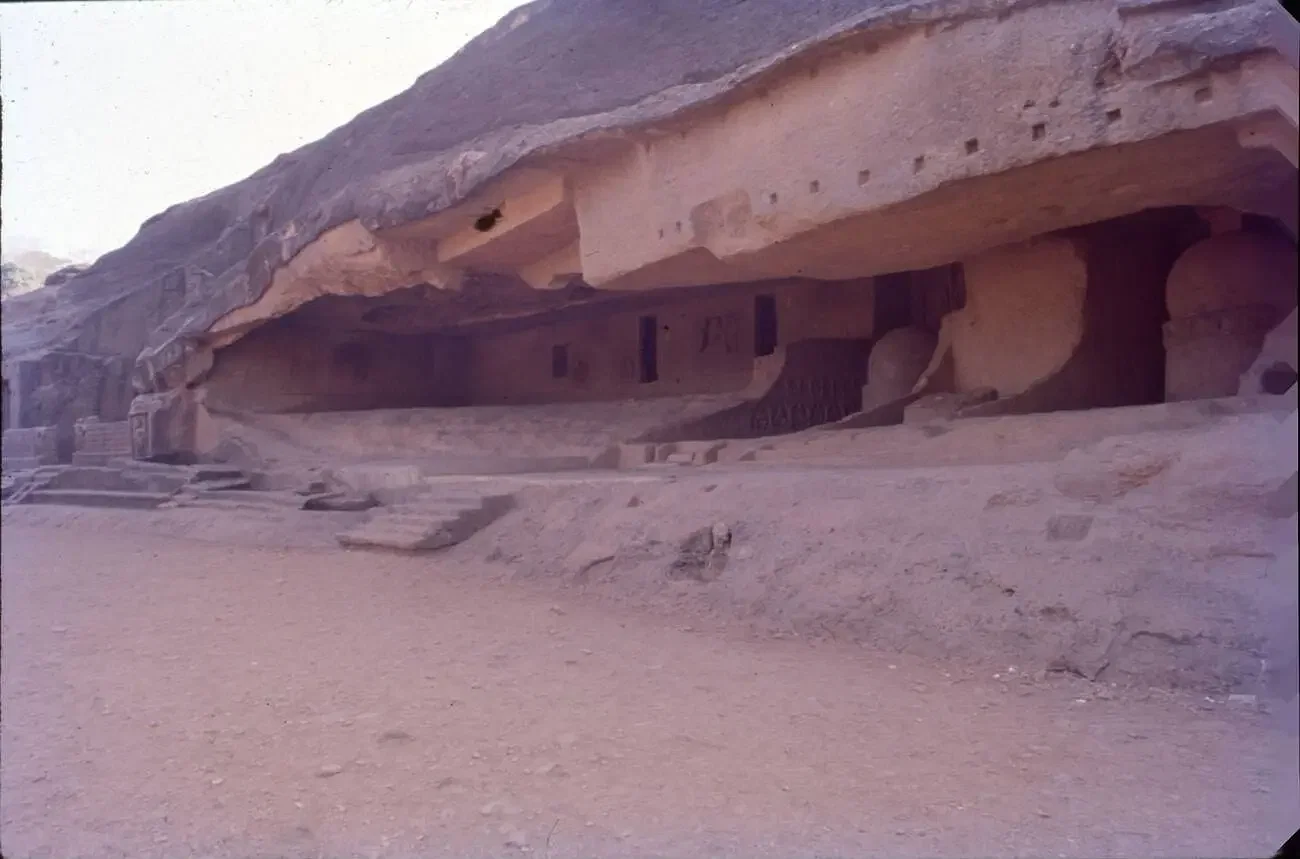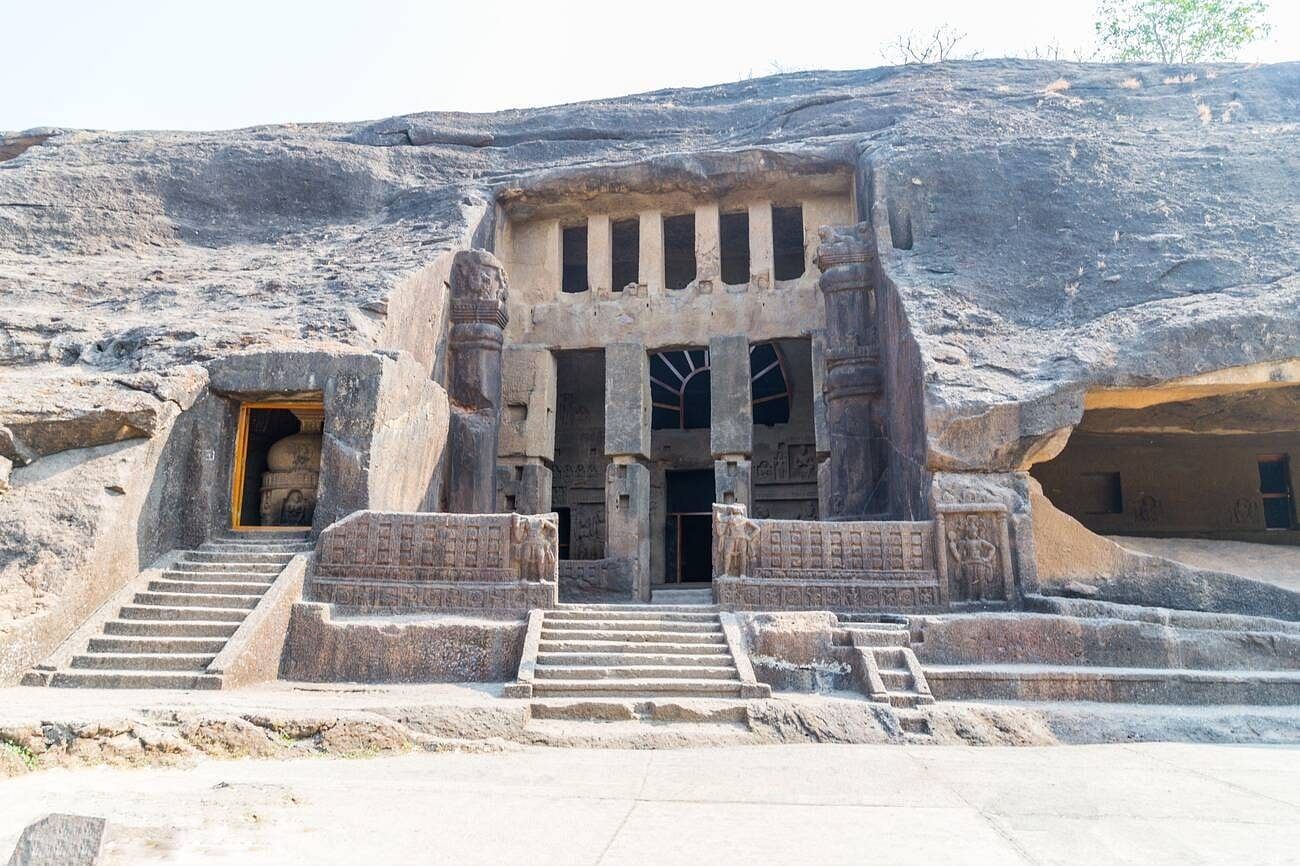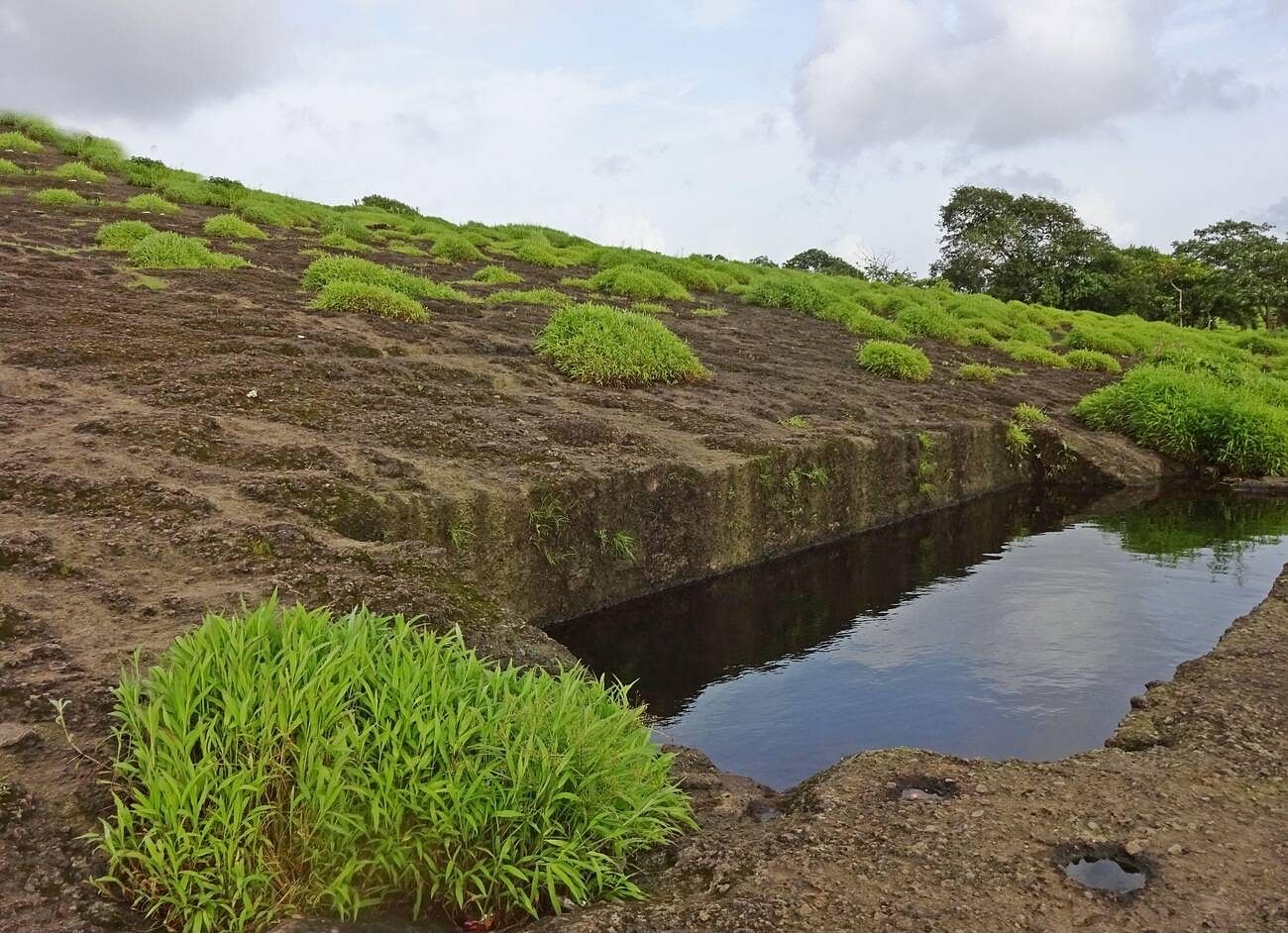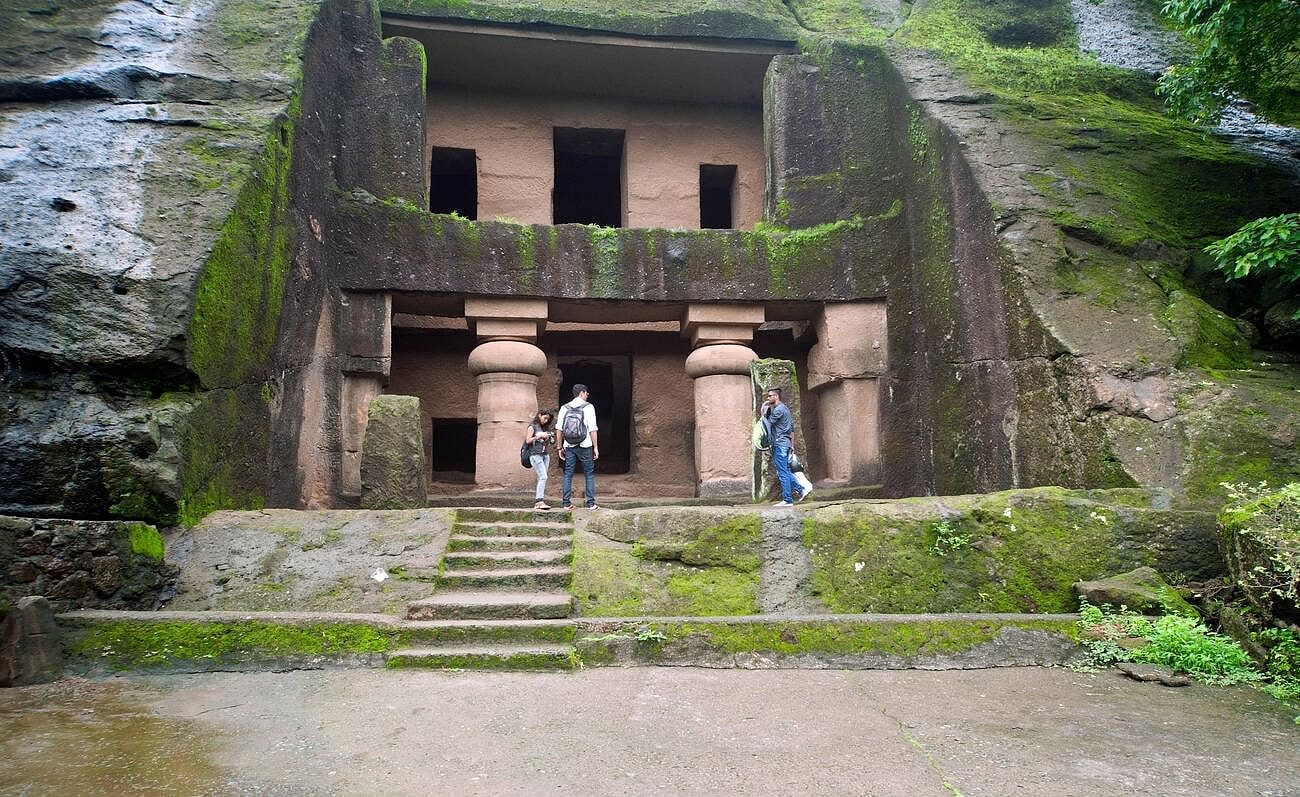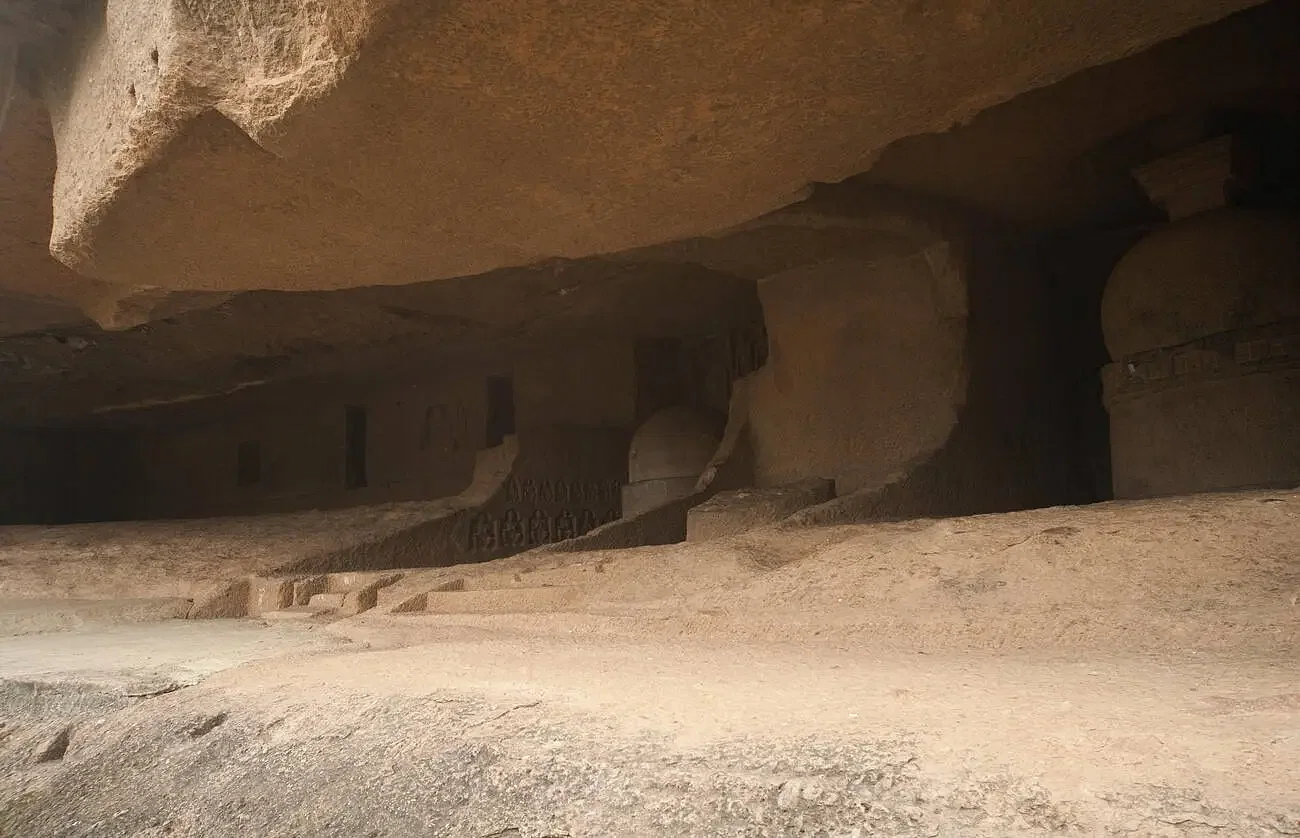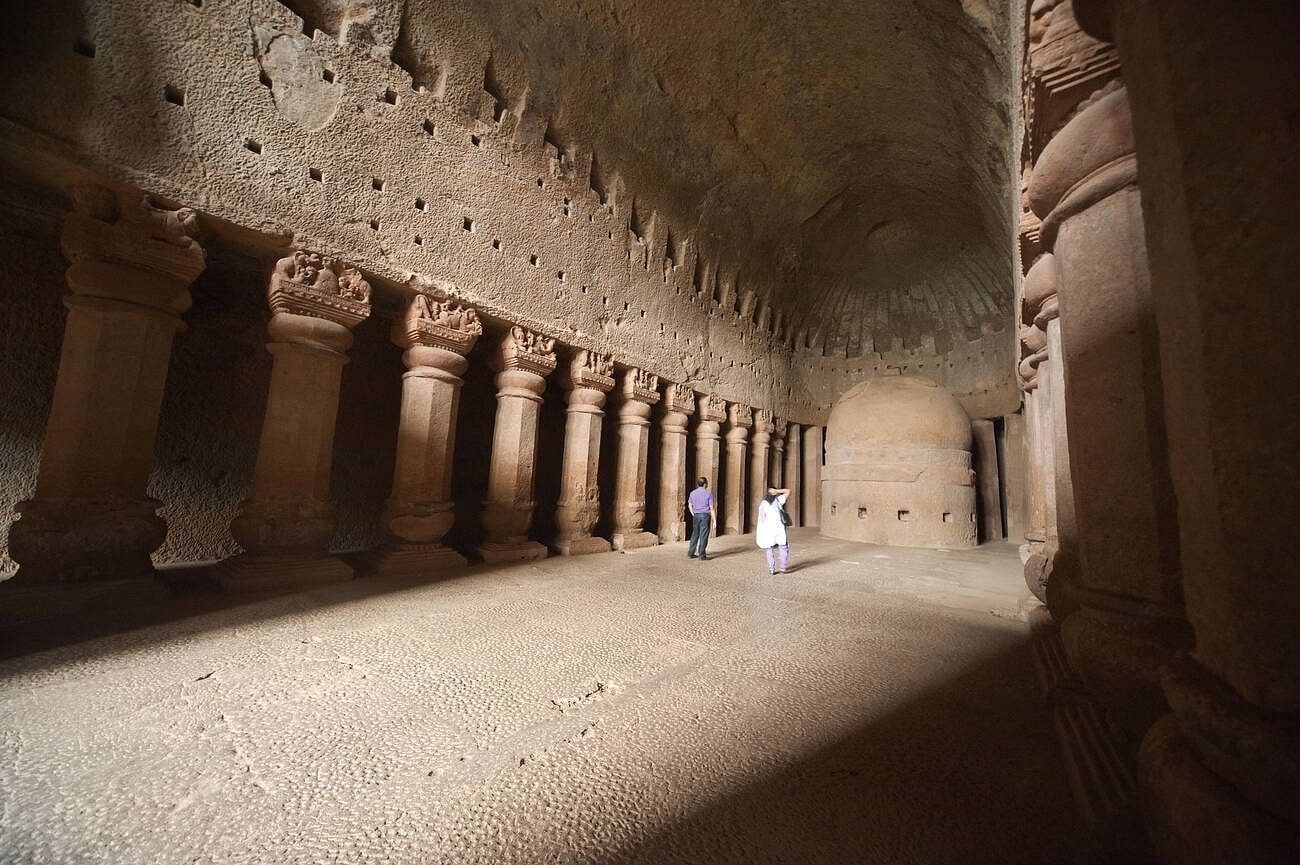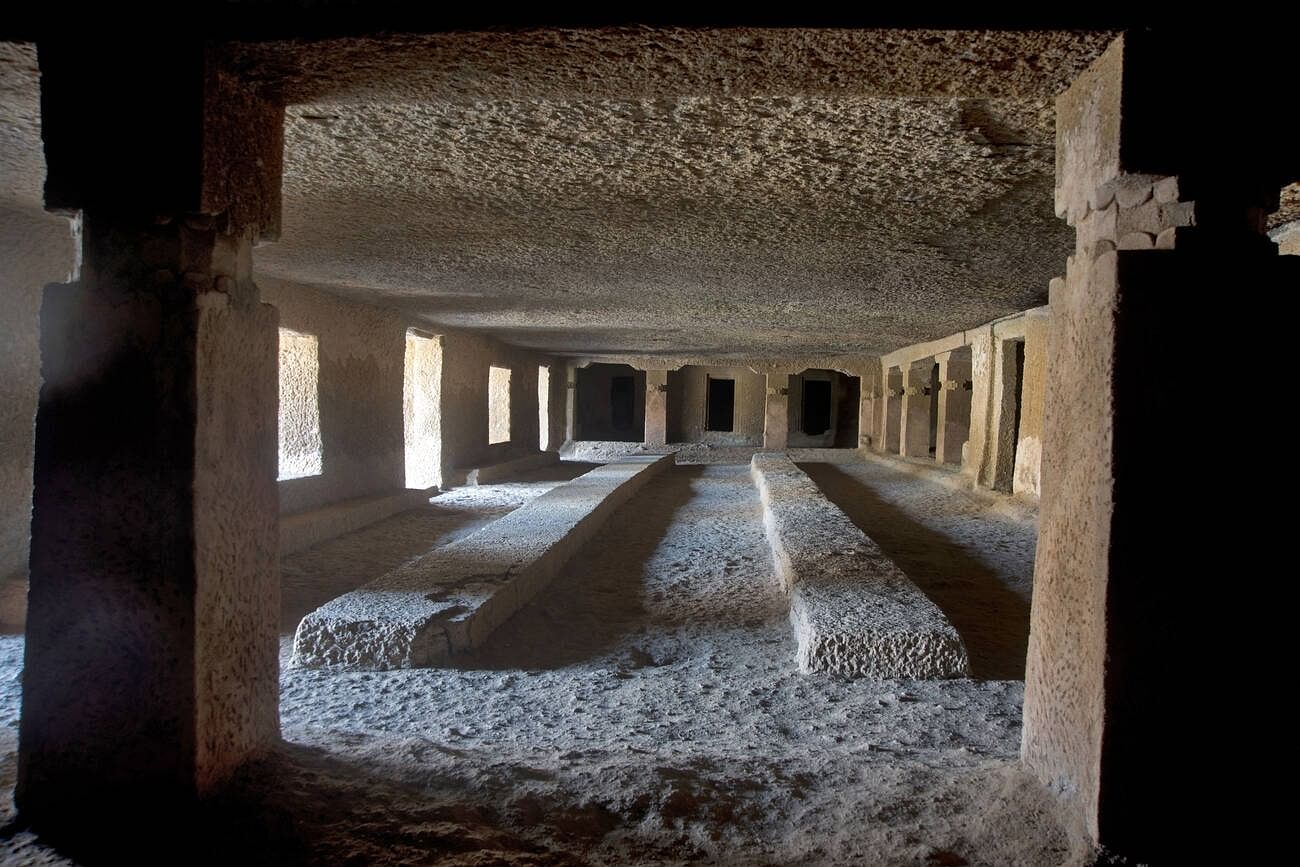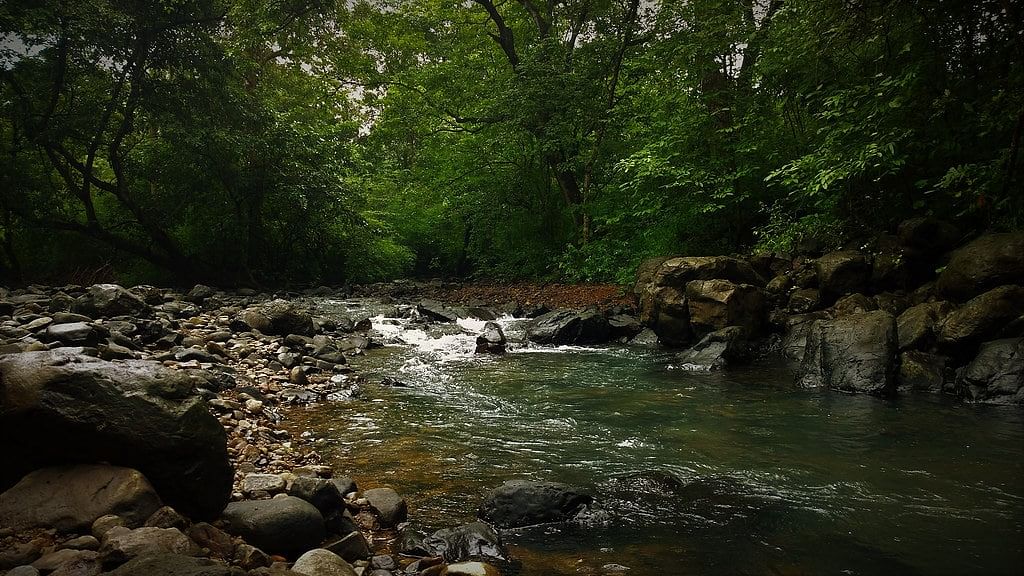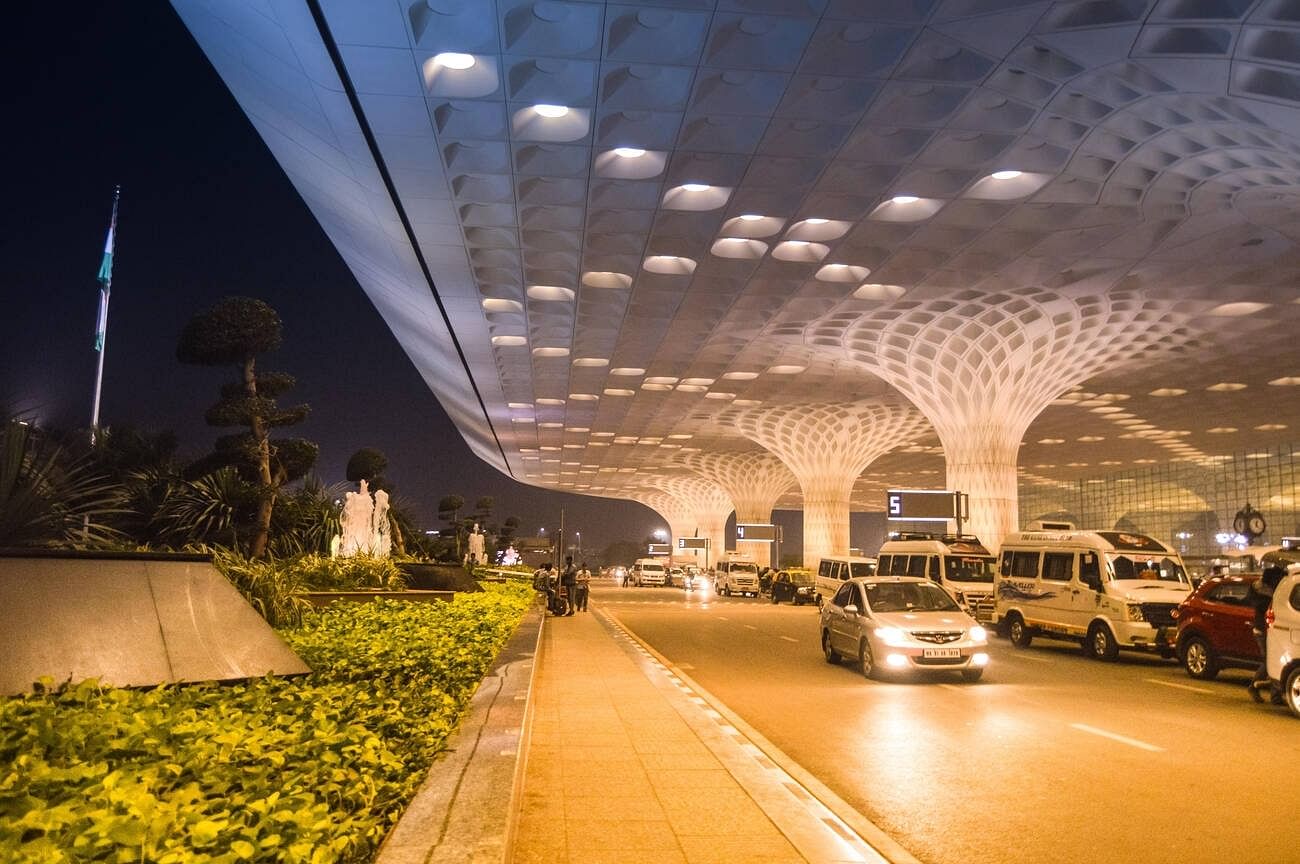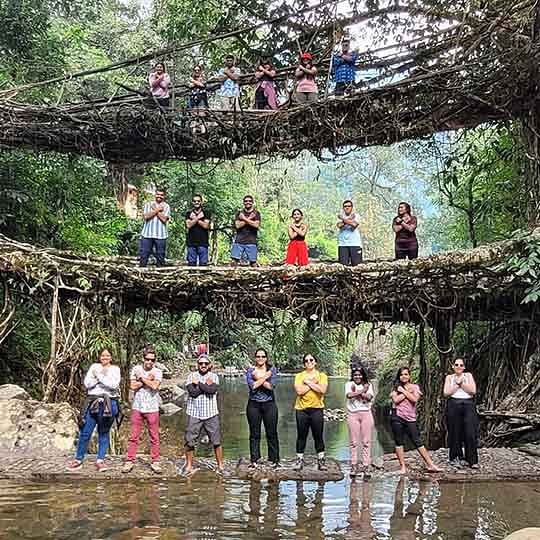The city of Mumbai is not just confined to Marine Drive or Mannat. There is a long untold history of Mumbai which is usually not mentioned. One such history is of Kanheri Caves in Mumbai which dates back to the 1st century AD. This ancient Kanheri Caves history is an important artifact to the Buddhist history in India. Kanheri Caves also known as Kanheri Gufa derived from the Sanskrit word Krishnagiri which is Black Mountain. Kanheri Caves are carved out of the mountains in the Salsette island, now in Sanjay Gandhi National Park. In the suburb side of Mumbai Kanheri Caves are located in Boravali.
There are around 109 caves carved out of the mountain. These caves are an abode of Buddhist sculptures, inscriptions, paintings, and carvings that date back from the 1st century AD to the 10th Century AD. For over 10 centuries these caves were the Buddhist viharas meant for studying, meditation, and living. At this time in Mumbai Kanheri Caves are the most ancient architectural sight.
By the 3rd century AD, Kanheri Caves in Mumbai gained importance in the Konkan region. It is estimated that Kanheri Caves were built as Vihars for the Buddhist Monks. These viharas were used for meditation, prayers, studying, and living abode for the Buddhist monks. Once the monastery for the Buddhist monks, Kanheri Caves later became a major center of learning. Over time Kanheri Caves were introduced with a new set of rituals which were followed by the Buddhist Monks. By the 6th century AD escortic like Tantric Buddhism was also introduced. There are around 64 Stupas of the Aachriya (Teachers) which dates back to 5-6 Century AD.
It is believed that the important school of Buddhism followed in Japan emanated. Cave no 90 depicts the famous Lotus Sutra, as there are various sects based on that particular sutra. The cave was abandoned in the 11th century and later after around 1000 years a Japanese Monk arrived at the Kanheri caves which were not easily accessible back then to identify cave no 90 and wrote down the sutra. There is no clear reason why the monks had to abandon Kanheri Caves and move out.
In the 15th century, these caves were found by the Portugues and it is said that they used this region for their Artilleries practice. Because of this, you can see that some of the caves are broken.
Architecture Of Kanheri Caves
The Basalt Rock architecture of Kanheri Caves in Mumbai was initially used just as an abode for the Buddhist Bhikshu during monsoon and was later an important place for meditation and studying Buddhism. The well-planned architecture of Kahneri Caves in Mumbai is an example of human brilliance. There are many unfinished paintings and constructions which make us wonder what was the reason for this incomplete work. One such incomplete painting of Lord Buddha is in Cave No. 34.
Let’s talk about some Architectural marvels of Kanheri Caves in Mumbai
The perfect example of the ancient way of rainwater harvesting and water conservation in India is Mumbai Kanheri Caves and Mandu Forts in Madhya Pradesh. The architecture of Kanheri Caves is divided into three mountains Northern Caves Group, Southern Caves Group, and Eastern Caves Group each having a water stream flowing. These caves were always occupied by the Bhikshus and Buddhist students and being at the top of the mountain they had to make their water system.
In front of every cave is a mini tank constructed to store the rainwater in those tanks. Two dams were constructed in Kanheri Caves National Park, both having a unique locking system that helped them store the rainwater. This unique water storing technology helped them to store the water for the longest period of the year.
Cave No. 1 in Kanheri Caves is a Vihar (Buddhist Monestry). The cave’s entrance is framed with two pillars carved out of the mountain. Originally this cave was planned to be excavated into a two-story chaitya (prayer hall for the Bhikshus/ Monks), but the construction never got completed.The reason why Cave No. 2 in Kanheri Caves was built is not yet decoded. There are three Stupas Cave No. 2 bearing Lord Buddha sculptures on it also, and the walls behind the Stupas have been carved with the Buddha sculptures. One of the Stupa has been broken off near the base. This cave has a long opening and has ample space in there.
This is the largest Chaitya in Kanheri Caves which is the most important cave in the whole series. At the entrance of the Cave No. 3 is a statue of Gautam Buddha carved out of the same mountain. The veranda at the entrance is an inscription of Yajna Sri Satakarni who was an Indian ruler in the Santavahana Dynasty. The temple is 86.5 feet tall and 9 feet and 10 inches long having a Stupa which is nearly 16 feet in diameter. The pillars have detailed carvings of elephants and people which now have worn out.
It is also known as Maharaj or Darbar Hall. Unlike other caves which are mostly Viharas this cave in Mumbai Kanheri Caves is not a vihar but a Dharamasala or a place of assembly. The plane of the cave projects the position of the throne of the president. It is estimated that this cave was occupied by a human representative of Lord Buddha for any assembly in cave No.11. The cave also has a dining hall for the people to have food.
Cave No. 90 is another architectural marvel in Kanheri Caves in Mumbai. It is a similar representation of Lord Buddha seated on Padmasan or Lotus supported by two figures with snake hoods.Many sculptures of Gautam Buddha with his attendees are carved out on the walls of Cave No. 90.
Places To Visit Near Kanheri Caves
Kanheria Caves is around 6.2 km from the entrance of Sanjay Gandhi National Park. There are many places to visit near Kanheri Caves in Sanjay Gandhi National Park. It is advisable to get your vehicle if you want to explore nearby places to Kanheri Caves. Some of the places are mentioned below:Around 4.6 km from Kanheri Caves is Deer View. As the name suggests you will get to see many deers in this area. In the Lush Green forest of the sanctuary, you will encounter many deers in this area. It is advisable to be silent when you are visiting this area as the deer might get scared by your noise and run away.It is the best trail in Sanjay Gandhi National Park. It is around 3.9 km from Kanheri Caves National Park. Shilonda Trail has two streams which makes it the best place to visit during monsoon. You can spot many endangered and preserved species of birds, reptiles, butterflies, and animals on Shilonda Trail. Except for the entry fee at Sanjay Gandhi National Park, you have to buy tickets for Shilonda Trail as well.
Suggest Read: Popular Team Outing Places Near Mumbai For A Memorable Weekend
How To Reach Kanheri Caves
1. How To Reach Kanheri Caves Via Road
If you are traveling via Car or bike then Sanjay Gandhi National Park is well connected with the other parts of the city. Sanjay Gandhi National Park is beside the Western Express Highway in Borivali East. Having a car or a bike you can directly enter the park and travel to the Kanheri Caves. From South Mumbai Kanheri Caves is at a distance of 28 km to 30 km. Once you reach the National Park you can either opt for a bus or share a taxi/rickshaw to Kanheri Caves in Mumbai. There is also a facility for cycling at the entrance of the Park, therefore if you are a fan of cycling you can peddle from the entrance of the park to Kanheri Caves.
Ps- the distance from the entrance of Sanjay Gandhi National Park to Kanheri Caves is around 6 km and Kanheri Caves are elevated at a height. So if you are cycling make sure you know how to cycle at an elevation.
2. How To Reach Kanheri Caves Via Railway
The nearest railway station to Kanheri Caves in Mumbai is Borivali Railway station. From Borivali railway station situated in Mumbai Kanheri Caves is at a distance of 7.1 km. You can take a rickshaw or walk towards the park and from there a bus or a Rickshaw. You can also get a cycle at the entrance if you want to cycle to the Kanheri Caves.3. How To Reach Kanheri Caves Via Air
The nearest Airport to Kanheri Caves in Mumbai is Chhatrapati Shivaji Maharaj International Airport. From this airport in Mumbai Kanheri Caves is around 22 km. You can take a cab directly to the Park.Kanhari Caves’ timings during the day are between 08:00 AM to 05:30 PM. The best time to visit Kanheri Caves is during monsoon season. It is the best place for trekking during monsoon. Suggested Read: Colaba Causeway: The Bustling Street Of Mumbai
Trekking Guide To Kanheri Caves
- Be aware of monkeys near Kanheri Caves.
- Wear proper shoes if you are going to trek on the mountain.
- Carry an ample amount of water with you.
- Some staircases are steeper so be careful
- The Difficulty level of the trek is easy. So, You can easily climb the mountain.
Restaurants Near Kanheri Caves
There is only one Fast food Restaurant near Kanheri Caves known as Canteen. You can have your basic snacks from there. But, it is advisable to carry your snacks if you are traveling with your kids as this restaurant near Kanheri Caves might not be clean. You can take a recommendation of some of the nearby restaurants outside Sanjay Gandhi National Park
- Blabber All Day
- Pizza By Slice
- Bustle- At the Rooftop
Hotels Near Kanheri Caves
There are no availabilities of hotels near Kanheri Caves, but you can look for hotels outside Sanjay Gandhi National Park. Following are some of the suggestions:- Hotel Divine
- Exotic Pool Villa
- Hotel Nice Stay
- Western Villa





